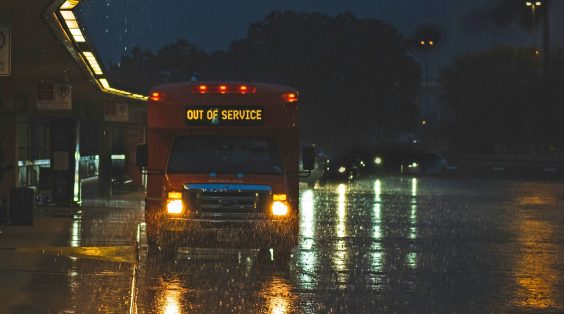The next infrastructure package might bring some of sustainable transportation advocates' most long-sought bills back to life — and establish new pots of money for bike lanes, sidewalks, and more.
Sen. Ed Markey (D-Mass.) recently co-introduced a package of progressive transportation legislation ahead of Biden's upcoming infrastructure bill, which could collectively help loosen car dependency's grip on American cities if they make the final cut. Among the four bills in the bundle is the Complete Streets Act, which is the product of more than a decade of work by groups like Smart Growth America; the legislation would require states to set aside 5 percent of federal highway funds specifically to walking, biking and transit connectivity improvements — and even more critically, require municipalities to prioritize multimodal road user safety over speed across the board in order to access that funding.
Active transportation currently receives only about 1.5 percent of dedicated federal funding through the Transportation Alternatives program, though some cities use more of their allotment from their state governments on walking and biking infrastructure. About 90 percent of the nation's most populous major cities already have Complete Streets policies on the books, though advocates say that creating strong federal guidance to help cities actually implement those policies well, as the Complete Street Acts would also do, is critical to actually making roads safer.
"Unfortunately, our ability to move around without relying on gas-guzzling cars is threatened by a national safety crisis," Markey said in a recent press conference. "That's really why introduced the Complete Streets Act."
Another advocate favorite that could rise from the dead is the Generating Resilient, Environmentally Exceptional National (GREEN) Streets Act, which would establish a national goal to reduce highway emissions — yes, believe it or not, we don't already do that — and require states that don't pull their weight to spend federal transportation dollars on greenhouse gas mitigation strategies until they do. But most important, the bill would also require states to reduce their per capita vehicle miles travelled, meaning that they can't just electrify cars to meet their climate goals without shifting at least a few trips to even greener modes.
It's not yet clear how much, exactly, states will need to reduce driving miles on their roads if the legislation passes; that will be up to Secretary Pete Buttigieg (though his past enthusiasm for a shift to a national VMT tax bodes well). But some advocates think that facing any consequences for swelling rates of driving would have a huge impact on state transportation decisions.
"To address toxic air pollution and climate change, we need to transition to a transportation system built for the future, one that reduces our reliance on the car and offers a multitude of opportunities for getting around,” said Ann Shikany, a federal policy advocate at Natural Resources Defense Council. “By getting states to come up with plans to reduce vehicle miles traveled, this legislation is a crucial first step toward a progressive, clean transportation future.”
Markey also helped introduced two pieces of legislation as part of his sustainable transportation spree. The Connecting America’s Active Transportation System Act —a rare bipartisan bill that was co-sponsored by Sens. Dan Sullivan (R-Alaska) and Chris Van Hollen (D-Md.) — would establish a $500-million grant program specifically to fill the gaps in cities' biking and walking networks. It's not a lot of money, but it would still increase the federal funds specifically dedicated to active transportation infrastructure by about 40 percent, and could help transform our nation's patchwork of standalone recreational trails into a true network of connected routes that serve as attractive alternative to driving.
"With more than 36,000 miles of multi-use trails on the ground, we can make strategic infrastructure investments that weave together existing active-transportation facilities, forming connected transportation systems," said Kevin Mills, vice president of policy for the Rails to Trails Conservancy in a recent interview. "By creating active transportation systems, we will make it easier and safer for people to walk and bike where they want to go."
For sustainable transportation advocates, the least-exciting element of Markey's recent green transportation package will probably be the Fostering and Realizing Electrification by Encouraging Zero Emission Refrigeration (FREEZER) Trucks Act – at least at first glance. But proponents argue that the bill would have a substantial impact on reducing environmental racism in our cities by greening one of the few cars on city streets that, contrary to what the average American SUV buyer these days might think, actually needs to be huge: the refrigerated delivery vehicle.
The act would create a new grant program at the Environmental Protection Agency to electrify diesel-powered vans and trucks with refrigerated compartments, which are a part of the reason why residents of communities of color breathe as much as 66 percent more pollution than residents of white neighborhoods.
Taken together with the other three pieces of legislation on Markey's wish-list, the FREEZER Trucks Act could help steer the next infrastructure bill towards a future with fewer cars and less pollution from the ones that must remain — in addition to creating jobs that could help the country recover from the pandemic.
"We have an opportunity as we recover from this crisis to fund green infrastructure and transportation projects that reduce emissions, promote safety, and ensure accessibility for all users of the road," Markey said. "We can take real, aggressive steps right now to paint our streets green."






